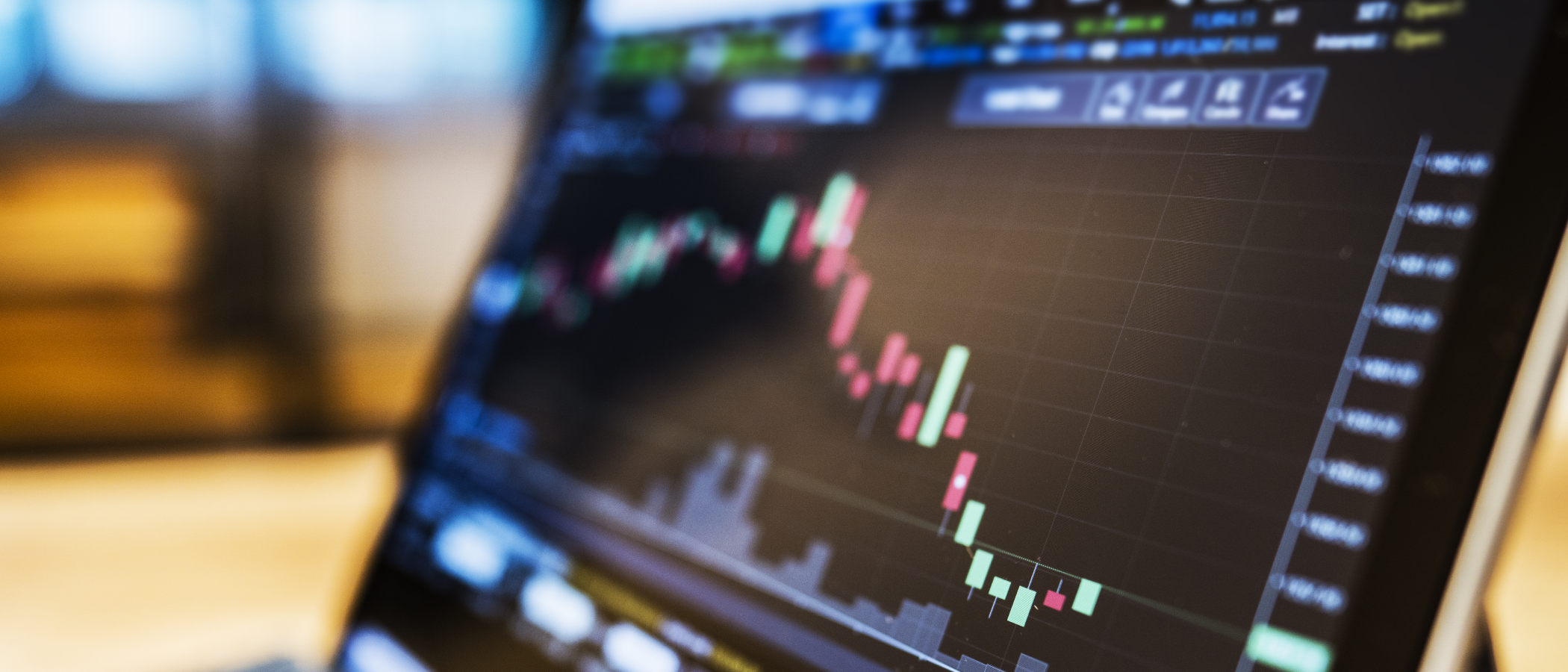2022 in A minor
When investors thought at the end of 2021 that the shock of the Covid-19 pandemic could be left behind, few expected the outbreak of war in Europe just weeks later. Besides the heavy toll on human life, the immediate impact of that harsh reality was the evaporation of energy security in Europe and a sharp rise in energy prices. The price of gas has increased fivefold, and the price of oil has more than doubled in two years. We are potentially in a more serious crisis than that of the 1970s. This crisis, which concerns us all, is not only about energy prices, but also about security of supply for Europe.
Since the start of this decade, the pandemic has been a disruption and the war has been an accelerator for financial market participants and for central bankers. We knew before the outset that the beginning of the central bank tightening cycle would be a delicate time for navigating markets. But the central bank reaction function ultimately led to a frontloading of monetary tightening unseen by the current investor generation.
However, as a result of a particularly challenging year 2022 for financial markets, investors face a better entry point today than just one year ago, both in fixed income and equities. Just one year ago, our annualised expected return for the next 5 years stood at a meagre 3.1% for a 50/50 balanced EMU portfolio. Medium-term expected returns have become more interesting as fixed income yield has been restored and equity valuations have fallen. Accordingly, the same measure has now risen to 5.5%.
2022 has been challenging, again
Many countries saw inflation rise to levels unseen for decades. Already under pressure because of supply chain tensions, inflation was pushed higher in the aftermath of Russia’s invasion of Ukraine. The latter caused a severe energy crisis in Europe and serious hardship for low-income countries as food prices came under pressure.
Persistent and broadening inflation has prompted central banks around the world to reverse their monetary policy accommodation: over the past half century, rarely has the world seen such a synchronized shift towards growth restrictive policies! Not surprisingly, the adjustment in financial markets has been painful: global stock and bond markets sold-off sharply.
In 2023, geopolitical uncertainty, tighter financial conditions and a dented purchasing power should continue to weigh on growth, but the peak of inflation has likely been reached. For financial markets the good news is that a great deal of bad news seems to be already priced in!

Geopolitical tensions to persist beyond 2023
Over the past decade, the world has transitioned from a post-cold war era to what is now often referred as “Great Power Competition” – a world of intensified competition between the U.S. and China, as well as between Russia and the West. Looking ahead, the political, economic, and military standoff between the West and Russia is expected to linger well into 2023, while tensions between the U.S. and China over access to strategic technologies, as well as the threat of a China’s military intervention in Taiwan are unlikely to abate. In this context, the challenges of global security partnerships, financial integration, supply chain resilience, and migration are no longer simmering in the background: geopolitics will continue to shape the economic outlook and be a source of volatility for financial markets.
Higher inflation and lower growth as a starting point
Besides geopolitical uncertainty, tighter financial conditions and still elevated inflation will continue to curb global growth in 2023. Central banks in major economies will remain focused on inflation. As economies start slowing down and financial fragilities emerge, calls for a pivot toward looser monetary conditions will inevitably become louder. In this context, activity in advanced economies will remain subpar in 2023.
In the U.S., while the risk of monetary policy miscalibration remains significant, the Fed should manage to engineer a “softish” landing. In Europe, growth perspectives remain challenging: although unseasonably warm temperature have recently pushed natural gas prices lower, renewed tensions could easily push the euro area into a recession.
In China, despite the gradual easing of the Zero Covid Strategy and some fiscal support, the bursting of the real estate bubble is far from over.
A first cross-asset conclusion: Continue buying duration via IG credit
Capital markets have been quick to price in a lot of bad news during 2022. Over the past 50 years, simultaneously falling bond and equity prices were seen only in 1994 – another year which saw a sharp monetary tightening by the Federal Reserve. Consequently, some yield has been restored in recent months and expected returns on fixed income holdings have turned positive again, in sharp contrast to the situation one year ago. Clearly, Candriam has started to gradually lengthen portfolio durations and we expect to continue to do so in the coming months; our experts have identified European investment grade issuers with good quality as the sweet spot. Further, we source the carry via emerging debt and global high yield bonds.

We end 2022 with a preference for equities over bonds, but we know that upside will likely be capped
Our investment strategy has become more constructive, based on attractive price levels at the start of the fourth quarter. In October, our analysis of investor sentiment, market psychology and technical pointed to widespread pessimism, revealing depressed measures. This extreme configuration represented a signal to re-enter the market and put money back to work.
Listening to central banks worldwide, we think however that the anti-inflation stance is capping upside for risk assets. Contrary to the high inflation episode of the 1970s, the Federal Reserve has made clear that only tangible signs that inflation will return to its target would put an end to its restrictive stance. We expect the Fed funds rate to hit 5% next spring.
Further, below-potential economic growth and still elevated inflation point to upcoming downgrades in consensus earnings expectations, representing an obstacle for equity markets overall. In this context, our preference goes to quality and defensive stocks in the Healthcare and Consumer Staples sectors.
On the other hand, the ongoing decline in inflationary pressures and the following economic progress once the landing is absorbed, should also limit the downside on risk assets. Technically speaking, we expect that the support levels registered in October should hold unless a spill-over of financial distress or a monetary policy error provokes a market contagion.
A prudent and humble reading of the lessons since the start of this decade should remind us that keeping hedging strategies can mitigate the performance impact on portfolios of unexpected, major shocks. We are confident that alternative investment strategies and gold will continue to play their role. Unstable correlations and still elevated expected volatility among asset classes lead us to diversify into trend-following CTAs which have already benefitted from this environment in the past year. Among alternative investment strategies, we also expect equity market neutral and long / short credit strategies to benefit from the high dispersion. Beyond gold, the recent experience also taught us that it makes sense to maintain an exposure to the commodity complex to reach a better diversification to strengthen the portfolio resilience.
Continue investing for a new era, with a particular focus on energy transition
This year’s European energy crisis raises an essential question: Will the energy transition in which we are engaged be slowed down or reinforced by the cut in Russian gas supplies? The European summer heatwave and drought of 2022 has further worsened the energy crisis, as river water levels have dropped significantly. Generating hydropower in Spain and Italy, cooling French nuclear plants, and shipping coal in Germany all became less trivial while the energy conflict between Europe and Russia escalated. As a result, we believe that the current crisis will serve as a formidable accelerator for the energy transition and therefore for the related investment themes. As responsible investors, it is our duty to facilitate and accelerate this transition. It is vital that we stick to our sustainability convictions, especially in an ever-more uncertain world. We remain confident in our believe that Sustainability is and will be a key driver of investment performance – today but also tomorrow and well into the future.
With the market downturn in 2022, equity valuations have become more attractive. More specifically, climate-related investments have lost more than 10 PE points in aggregate since the beginning of the year, falling from 31x to 20.5x. Their valuations are once again at attractive levels. And, at current levels, we see that in some cases we are not valuing future growth but only the operating income from the installed base. The sensitivity to higher interest rates has fallen and provide a better starting point for investors. Active management will be key in selecting those companies whose business models make a positive impact on the world of tomorrow.
Whether you are dynamic like Glass Marcano, passionate like Gustavo Dudamel, or even more sensual like Carlo Maria Giulini, as a good investor, the important thing for you will be to deeply understand the various appoggiaturas and punctuations that we might meet as we face the music in 2023 and to have the asset classes play in harmony at the right time, hopefully in C Major.
It is on this hopeful note that I wish you a very happy 2023.

